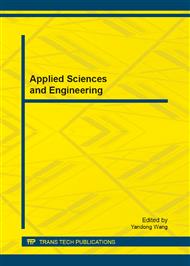p.734
p.740
p.745
p.750
p.755
p.760
p.764
p.768
p.778
Optimization of Hood Thickness Based on the Multi-Objective
Abstract:
Head injury of pedestrian is the most common and fatal cause of mortality in vehicle-to-pedestrian crash. And the engine hood is most likely to cause harm to pedestrian head. Efforts to improve engine hood design, which minimize the head injury of pedestrian in vehicle-to-pedestrian crash, are becoming more and more important. In this study, an approximate model of hood thickness for three targets: HIC, mass and modality, is established. In order to meet the requirements of lightweight and reducing vibration and noise, approximate models iterate by the NSGA-II genetic optimization algorithm, and select the Pareto optimal solutions for thickness optimization. At last the study re-simulates the collision between pedestrian head and hood to verify the reliability of the obtained optimization results.
Info:
Periodical:
Pages:
755-759
Citation:
Online since:
September 2012
Authors:
Keywords:
Price:
Сopyright:
© 2012 Trans Tech Publications Ltd. All Rights Reserved
Share:
Citation:


